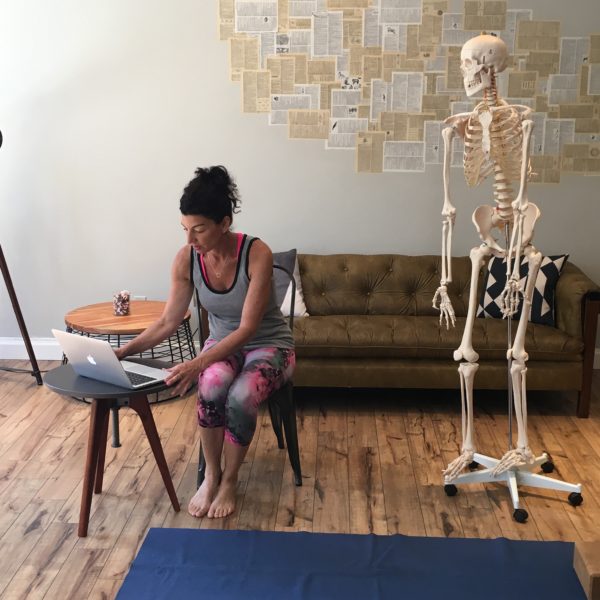
I recently had a student come to class and she said she had broken her arm a few months ago. She was in Physical Therapy and I asked if her P.T had cleared her for yoga and she said no, the therapist was not aware she was going to start yoga again.
This scenario is fairly common. People often look at yoga as “just stretching” and do not consider it strenuous or an activity that can aggravate an injury. Of course, it depends on the type of class or the type of injury so this aspect needs to be reviewed as well. Also, to the student’s credit, she wanted to invest in her health by attending class so we just needed to find a way to make it safe.
Have you ever had this scenario happen? I’ve had it occur a few times. Along with the above scenario, I had a student with a prosthetic arm, a student with bilateral carpel tunnel and a student with a wrist injury. The reality is students will show up with a variety of injuries (we’re just talking about upper extremity issues here but we know there are a host of other issues in other parts of the body) and as teachers, we have to run through a checklist of sorts to see if it’s safe for them to practice. Remember though, ultimately, it’s the student’s decision. Students should all have signed a liability form before their first class which stands as a waiver of responsibility on the part of the studio and teachers need to be sure their liability insurance is up to date.
So, how can we approach this particular situation? Here are a few tips:
- Share with the student what to generally expect in class. Be sure the student understands the sequence and the physical demands of the class. So, in this case, it’s critical that you share that there are a lot of poses where the position is weight bearing on the arms and this will happen A LOT. So, poses like Downward Dog, Upward Dog and Plank to name a few. Sometimes students don’t think about how much time will be spent on the arms.
- Give the student an idea of how the sequence is arranged. Share with the student that the first section of class is mainly “arm intensive” meaning there are lots of Down Dogs, Up Dogs and Planks. This is the Sun Salutation A and B section and let them know that in the first part of class (let’s say, the first 15 minutes of a 60 minute class) there will be lots of time spent on the arms. From there, share that there will be twisting poses, where they won’t be on the arms as much and then time in balancing postures, triangles and then time on the belly and the back. Giving them a sense of how the sequence will be arranged helps them mentally prepare for when they will need to modify.
- Discuss modifications the student can take and an approach to practice. Share ideas with the student to give them a strategy for practice. This could include suggesting they forgo the “high to low push up” movement and simply stay standing during Sun Salutations and do the standing poses (Warrior 1). Suggest they take Child’s pose as an alternative. Offer to them the freedom to do lots of alternate seated poses while the class is in the first part of the sequence that requires a lot of arm work. Of course, this requires that the student have some familiarity with yoga. If they do not, it will be very difficult for the student to take the initiative to do alternate poses.
- Find a good spot for the student to place their mat. Help the student find a spot to the side or the back of the room so they feel comfortable modifying without being in full view of other students.
- Once you begin class, keep your eye on the student. Don’t hover over them but be aware of their movements, how they are modifying and if you feel it’d be helpful to check in with them do it. Certainly after class, check in with the student and find out what they thought and how they feel.
Interested in more tips on how to work with students with injuries? Get your worksheet below:
I welcome your comments! Thanks for reading.
